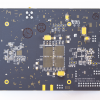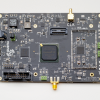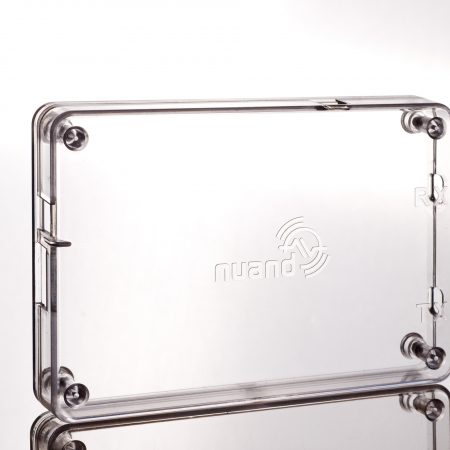Description
Sign up for the newsletter on the right side of this page to receive stock and inventory updates.


Made in USA
NDAA Compliant
Kit contains:
- bladeRF x115 (115KLE Cyclone 4 FPGA)
- USB 3.0 SS cable
- 2x SMA cables
Out of the box, the bladeRF can tune from 300MHz to 3.8GHz without the need for extra boards. Through open source software such as GNURadio (live image), the bladeRF can be placed into immediate use. With its flexible hardware and software, the bladeRF can be configured to operate as a custom RF modem, a GSM and LTE picocell, a GPS receiver, an ATSC transmitter, or a combination Bluetooth/WiFi client, without the need for any expansion cards. All of the bladeRF host software, firmware, and HDL is open source, and available on GitHub.
Highlights:
- Full-duplex 40MSPS 12bit quadrature sampling
- Factory calibrated VCTCXO tuned within 1 Hz of 38.4 MHz
- Removable-cap RF shields for increased system sensitivity and isolation
- Flexible clocking architecture for arbitrary sample rates
- GPIO expansion port ( GPIO Expansion Board )
- SPI flash allows for headless operation
- Expanded frequency coverage using XB-200 Transverter Board
- Typical +6dBm TX power
More Information:
- Product Brief
- Getting Started guide on bladeRF wiki
- Schematics
- Mechanical DXF File
- Software Support and Additional Resources

High speed, low latency and increased power delivery over a single cable: USB 3.0 Superspeed is the perfect interface for a wide bandwidth radio front end to modern computers. The Cypress FX3 microcontroller is the ideal solution with a powerful ARM9 processor and enough bandwidth to saturate the full duplex 5Gbps USB 3.0 link.
An Altera Cyclone IV FPGA provides the interface between the FX3 and RF transceiver. This FPGA has single-cycle access embedded memory, hard 18×18 multipliers for dedicated DSP and many general logic elements ready to be programmed.


From bits to RF, the LimeMicro LMS6002D is a fully integrated RF transceiver. Made to power picocell stations, this transceiver is capable of handling anything from simple FM audio to the latest 4G LTE standard to whatever the future may hold.
The bladeRF’s design has been tested and verify to meet our very high standards. At peak RF performance, the bladeRF can occupy 28MHz of bandwidth over its operating bandwidth without any significant spurs.













